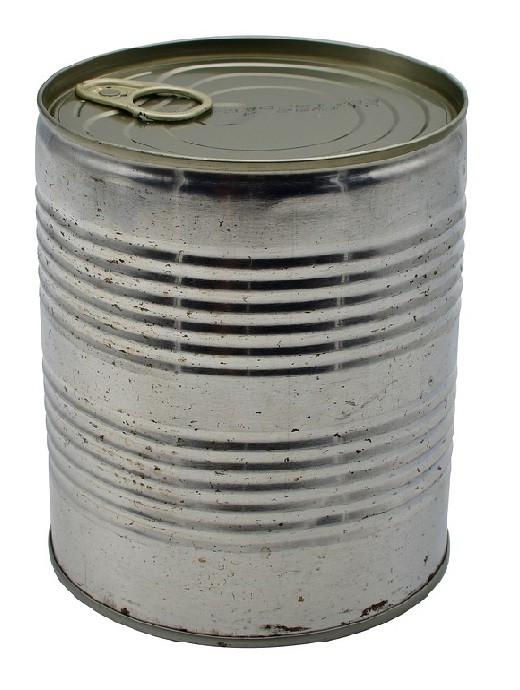Automotive Sheet Metal Gauge Guide: Understanding Thickness Standards
Understand automotive sheet metal gauges
Sheet metal is the backbone of automotive manufacturing, form everything from body panels to structural components. The gauge of sheet metal refer to its thickness, with each gauge number represent a standardized measurement. For those work on car restorations, repairs, or custom-builds, understand these measurements is essential for select the right materials.
Common automotive sheet metal gauges
Most modern vehicles use sheet metal range from 18 gauge to 22 gauge for body panels. Hither’s a breakdown of the typical measurements:
-
18 gauge
roughly 0.0478 inches ((.214 mm )) for structural components -
19 gauge
roughly 0.0418 inches ((.062 mm )) mon for fenders and doors -
20 gauge
roughly 0.0359 inches ((.912 mm )) ndard for many body panels -
22 gauge
roughly 0.0299 inches ((.759 mm )) for lighter applications like interior panels
It’s important to note that in the gauge system, higher numbers indicate thinner metal. This counterintuitive measurement system ooriginatesfrom the wire industry and was belated to adopt for sheet metal.
The gauge system explain
The gauge system can be confusing because it works in reverse of what might seem logical. A 16 gauge sheet is thicker than a 20 gauge sheet. This system date gage to the wire drawing industry, where the gauge number represent how many draws wereneededd to produce a wire of that diameter.
For automotive applications, manufacturers typically use what’s know as the U.S. standard gauge for sheet steel. This standardized system ensure consistency across the industry.
Materials use in automotive sheet metal
While gauge refer to thickness, the material itself is evenly important. Common materials include:
Cold roll steel
Coldness roll steel is the nearly common material for automotive body panels. It offers a good balance of strength, formability, andcost-effectivenesss. Most production vehicles use coldness roll steel in gauges range from 18 to 22, depend on the application.
Hot rolled steel
Red-hot roll steel is less common in body panels but may be ususedn some structural components. It’s broadly thicker and less refined than ccold-bloodedroll steel, typically appear in heavier gauges from 12 to 16 for chassis components.
Galvanized steel
Galvanized steel feature a zinc coating that provide excellent corrosion resistance. Modern vehicles oft use galvanized steel for body panels, typically in 20 to 22 gauge. The zinc coating adds minimal thickness but importantly extend the lifespan of the metal in corrosive environments.
Aluminum
Aluminum sheet metal is become progressively popular in automotive manufacturing due to its lightweight properties. When aluminum is use, it’s typically in a thicker gauge than steel to compensate for its lower strength. Common aluminum gauges in automotive applications range from 14 to 18 gauge.
High strength steel (hHSS)
High strength steel allow manufacturers to use thinner gauges while maintain structural integrity. Many modern vehicles incorporate HSS in 20 to 22 gauge for body panels, help to reduce weight while preserve safety standards.
Gauge selection for different automotive components
Different parts of a vehicle require different gauge sheet metal base on their function and location:
Body panels
Exterior body panels like doors, hoods, and fenders typically use 18 to 22 gauge steel. The exact gauge depend on the specific requirements for the panel:
- Hood panels: normally 20 22 gauge
- Door skins: typically 20 gauge
- Quarter panels: oft 18 20 gauge
- Roof panels: loosely 20 22 gauge
Structural components
Structural elements require thicker gauges to provide adequate strength and crash protection:
- Frame rails: normally 14 16 gauge
- Rocker panels: typically 16 18 gauge
- Pillars (a, b, c ) oft 16 18 gauge
- Floor pans: broadly 18 20 gauge
Interior components
Interior sheet metal components can use lighter gauges as they don’t need to withstand the same forces as exterior panels:
- Dash panels: normally 20 22 gauge
- Interior trim supports: oft 22 24 gauge
- Seat frames: typically 18 20 gauge
How manufacturers determine appropriate gauges
Automotive engineers select sheet metal gauges base on several critical factors:
Structural requirements
Components that bear loads or contribute to the vehicle’s structural integrity require thicker gauges. Engineers conduct stress analysis to determine the minimum thickness need to withstand expect forces while maintain an appropriate safety margin.
Weight considerations
Vehicle weight flat impact fuel efficiency and performance. Manufacturers strive to use the thinnest gauge that meet safety and durability requirements. This balance has lead to the increase use of high strength steel and aluminum, which allow for thinner gauges without compromise strength.
Manufacturing processes
The manufacturing method influences gauge selection. Deep draw parts (those that undergo significant stretching during formation )frequently require thicker initial gauges to prevent tear or excessive thinning during the form process.
Cost factors
Thicker gauges cost more in terms of raw materials. Manufacturers must balance performance requirements with cost constraints, oftentimes lead to strategic use of vary gauges throughout the vehicle.
Evolution of automotive sheet metal gauges
The history of automotive sheet metal show a clear trend toward optimization:
Early automotive era
In the early days of automobile manufacturing, vehicles oftentimes use comparatively thick sheet metal (14 16 gauge )passim. This was partially due to less advanced form techniques and the need for durability on rough roads.
Mid-century developments
As manufacture techniques improve in the mid 20th century, automakers begin use thinner gauges (18 20 )for body panels. This period see the standardization of many sheet metal practices static in use today.
Modern lightweight construction
Contemporary vehicles employ sophisticated computer modeling to optimize gauge selection. Many modern cars use 20 22 gauge high strength steel or aluminum alloys that provide better strength to weight ratios than the thicker mild steel use in older vehicles.
Measuring sheet metal gauge
For those work on automotive projects, accurately determine sheet metal gauge is essential:
Use a sheet metal gauge tool
A dedicated sheet metal gauge is the well-nigh accurate tool for measurement. These specialized tools have notches of various sizes correspond to standard gauges. To use one, but slip the edge of the metal into the notches until you find the closest fit.
Digital calipers
Digital calipers provide precise thickness measurements in inches or millimeters. After measure, you can convert the decimal measurement to the corresponding gauge use a conversion chart.
Micrometer
For the nigh precise measurements, a micrometer can determine sheet metal thickness to within 0.001 inches. Like calipers, the result measurement must be converted to gauge use a reference table.
Aftermarket and replacement considerations
When replace or repair automotive sheet metal, match the original gauge is important:
OEM vs. Aftermarket panels
Original equipment manufacturer (oOEM)panels will match the factory gauge specifications. Aftermarket panels may vary, with some economy options use thinner gauges that can affect durability and fit. Quality aftermarket suppliers typically specify the gauge of their products.
Restoration challenges
Classic car restorers oftentimes face challenges find exact gauge matches for vintage vehicles. In some cases, custom fabrication may be necessary, require careful selection of appropriate gauge sheet metal to maintain structural integrity while preserve authenticity.
Performance modifications
Performance orient modifications might resignedly use different gauges than original specifications. Lightweight body panels might use thinner aluminum (while maintain adequate strength ) while roll cages and structural reinforcements require thicker gauges ( (pically 12 14 ) ) provide additional protection.
Impact of gauge on vehicle performance
The thickness of automotive sheet metal affect several aspects of vehicle performance:

Source: eastwood.com
Weight and efficiency
Thinner gauges reduce vehicle weight, improve fuel efficiency and performance. Every 100 pounds remove from a vehicle can improve fuel economy by roughly 1 2 %. Nonetheless, this must be balance against structural requirements.

Source: kalpatarupiping.com
Durability and dent resistance
Thicker gauges broadly offer better dent resistance in minor impacts. This is why some premium vehicles use slender thicker sheet metal for exterior panels, enhance the perception of quality and durability.
Noise, vibration, and harshness (nVH))
Sheet metal gauge affect a vehicle’s VH characteristics. Thinner panels may transmit more road and wind noise or exhibit more vibration. Manufacturers oftentimes address this through strategic use of sound deaden materials instead than increase gauge thickness.
Work with automotive sheet metal
For DIY enthusiasts and professional body shops, understand how to work with different gauges is crucial:
Cut techniques
The appropriate cutting method varies by gauge:
- 18 gauge and thicker: power shears, plasma cutters, or angle grinders work substantially
- 20 22 gauge: aviation snips, electric shears, or nibblers are effective
- 22 gauge and thinner: hand snips can be used for small cuts
Welding considerations
Thinner gauges require more careful welding to prevent burn through:
- MIG welding is preferred for automotive sheet metal, with wire and settings adjust for the specific gauge
- 20 22 gauge require lower heat settings and faster travel speeds
- Tack welding help prevent warping on thinner gauges
Form and shape
Different gauges respond otherwise to form operations:
- 18 gauge and thicker: require more force to bend but hold shape substantially
- 20 gauge: good balance of formability and strength for most body work
- 22 gauge: forms easy but may be overly flexible for structural applications
Conclusion
Understand automotive sheet metal gauges is essential for anyone involve in vehicle manufacturing, repair, or customization. The appropriate gauge balance structural requirements, weight considerations, manufacturing processes, and cost factors. While modern vehicles trend toward thinner gauges make possible by advanced materials and design techniques, the fundamental principles of gauge selection remain consistent.
Whether you’re will restore a classic car, will repair collision damage, or will design custom components, will select the correct gauge will ensure your finished product will have the right combination of strength, weight, and durability. By understand the standard gauges use in automotive applications and their appropriate uses, you can make informed decisions that result in higher quality, foresight last results.



